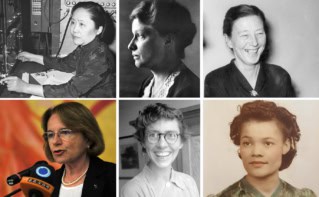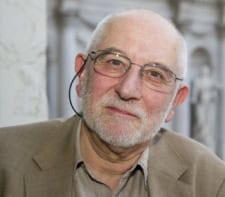Later this month more than 300 female physicists from all over the world - and a few token men - will gather in Paris for the first ever international conference on women in physics. Organized by the International Union of Pure and Applied Physics, the primary purpose of the conference is "to understand the severe under-representation of women worldwide and to develop strategies to increase their participation in physics".

The meeting will have sessions on topics as diverse as attracting girls into physics and getting women into the physics power structure nationally and internationally. Delegates will also publish a list of resolutions that will be sent to physical societies, funding agencies and governments around the world. Many of the issues that will be discussed in Paris are addressed in this special issue on women in physics.
The basic situation can be summarized as follows: women in all walks of life tend to earn less than men and tend to be under-represented in the higher echelons of society. The situation is more pronounced in science and technology, and even more so in physics and engineering. Is this a problem? A female correspondent to this magazine once claimed that it was not. Scientists tend to be underpaid and under-appreciated in general, she wrote, so women tend to avoid scientific careers because they are brighter than men!
The shortage of women is not, however, good for physics as a subject because intellectual progress depends on attracting the very best brains – male and female. The reluctance of women to follow science and engineering careers will also become a problem for many countries as the world economy becomes more and more high-tech. The problem is exacerbated by the fact that large numbers of female science and engineering graduates – 50 000 in the UK alone – are not working at any one time.
The problems start in schools. The number of schoolgirls studying physics in the 16-19 age group varies across the world, but is rarely higher than one in three. This figure falls to about 20% at the undergraduate level, and to less than 10% – and often much less – at the level of university professor. Fortunately, the wave of retirements expected over the next decade offers a chance to redress the balance: the California Institute of Technology, for instance, has set itself the target of increasing the number of female faculty members from 11% to 25% within a decade. Physicists of both sexes must seize this opportunity.
We can learn much from women who have succeeded in physics. Of those contacted by Physics World, most were influenced to study physics by their parents, rather than their teachers. Most did not have mentors or role models either, although many of them are now role models for younger physicists. Moreover, only a handful benefited from schemes designed to encourage women in physics.
According to our sample it is also possible – but not easy – to combine a successful physics career and a family. Many female physicists also pointed out that while much discrimination is unintentional, that does not make it any less real. Male physicists only have to look at the data to see that women are discriminated against.
The women we spoke to have clearly become physicists against the odds, but what about the vast majority of schoolgirls who give physics a wide berth from an early age? Tough as it might be for male and female physicists to accept, image and appearance are important to young people, and anyone trying to encourage them into science needs to recognize this and act on it.
“One could have a mighty bonfire with all the material written on why more women do not practise science” writes one delegate who will be attending the Paris conference. Given the importance of encouraging more women to do physics, Physics World is happy to add more fuel to the fire.



